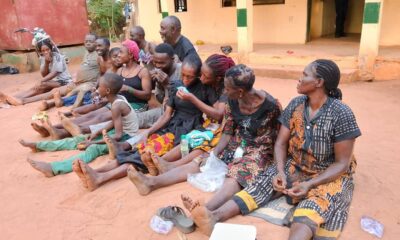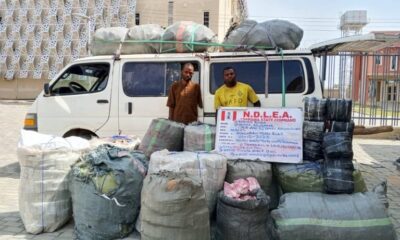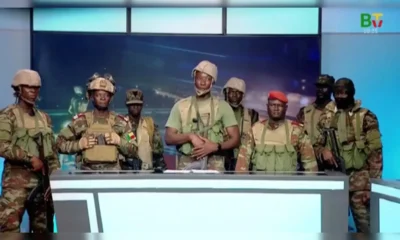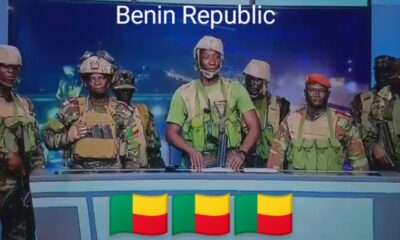The first week of Big Brother Naija Season 10, tagged BBNaija: 10/10, delivered a heady cocktail of drama, emotion and early alliances, from viral diary room moments to shocking confrontations, emotional outbursts, and strategic play.
Here’s your roundup of the most talked-about highlights from Week 1
1. Imisi’s entrance
Imisi’s grand entry instantly caught attention, not for glamour, but for its sheer unpredictability. From her disturbing wig to a less-than-coordinated outfit and her bold “Eku Ile” Yoruba greeting, she was an instant topic across social media.
Imisi made it clear that she’s not your regular housemate, hinting on ‘street’ (The low-class) inclusivity on the show.
2. Zita calls out unnecessary drama
During her diary session, Zita expressed irritation at what she perceived as forced drama from fellow housemates.
“I am dagbana choko, but it is natural,” she said, implying she wouldn’t get involved in fake antics for camera time.
Biggie, amused, asked: “What is dagbana choko?”
She fumbled a slangy reply, “Skolomindos… sorry,” which got viewers laughing.
3. Kaybobo vs Mesan: Bully tag sparks debate
Tension spiked when Mesan labelled Kaybobo a bully due to his recent encounter with housemates, including Koyin. The accusation didn’t sit well with him.
“You wanna see a bully… I don talk my own, if you see me left, go right,” Kaybobo warned furiously.
The confrontation left the house tense, and Kaybobo later broke down in tears.
4. Rooboy vs Jason Jae over disrespect
Rooboy, often jovial but sensitive, took offence when Jason Jae jokingly called him crazy.
“You call me your guy, you tell me say I dey craze,” he fired back.
Jason had to apologise, sensing Rooboy didn’t take the word lightly.
5. Mide’s facial expression and fake nominations
Mide caused subtle ripples on Day 1 with her eye-rolls and reactions to housemates’ entrances, prompting commentary online about her perceived snobbery.
During nominations, she baffled Biggie by naming “Menanze” and “Deziani”, people who aren’t even housemates.
Biggie responded dryly, “Are these housemates?”
Later in the week, Ebuka revealed that the nominations were fake, and no one would be evicted yet, a twist that will be unveiled to the housemates on Sunday.
6. ‘Na your papa get Lagos’, Koyin gets emotional
A dramatic food clash between Kaybobo and 21-year-old Koyin ended in tears.
“Na your papa get Lagos?” Kaybobo snapped after Koyin demanded more noodles.
Though the statement cut deep, Koyin surprised many by not nominating Kaybobo in the diary room later.
7. Jason Jae retains Head of House title after a challenger
Jason Jae, initially appointed interim Head of House on Sunday, became the official HoH after winning the Monday night challenge.
He edged out contenders including Rooboy, Sultana, Dede, Kuture, and Bright Morgan.
8. Rooboy slams food hoarders
In his diary session, Rooboy criticised housemates for hoarding food and wasting resources, especially water.
9. Kenari vs Otega: Chicken fight gets heated
A grilled chicken fight erupted between Otega and Kenari, after Kenari accused Otega of greed.
“You dey claim chef, you dey in charge of grill,” Kenari shouted, as Otega held on to a full plate.
The fight nearly escalated, but Victory and Thelma intervened, and another fight broke out.
10. Mesan’s diary room breakdown
In one of the most emotional scenes yet, Mesan broke down in tears while talking about the pressure to support his mother and siblings.
He then asked Biggie if he was on live TV and if he was being recorded.
His vulnerability resonated with many viewers online.
11. Imisi’s face-off with Rooboy and Koyin
A heated confrontation between Imisi, Rooboy and Koyin over a dirty pot turned messy, literally.
Imisi, switching between a funny phonetic English and street slang, waved a fork in her defence.
Koyin flared up when she threatened to stab him. The two later reconciled.
12. Wager task failure
Friday’s wager task, themed around an unmasking ball, was a mix of drama, guessing games and brain teasers. Biggie was unimpressed, and the housemates lost, a blow that will likely affect their welfare in the coming week.
13. Vibes, dance, and strategy
Despite the drama, housemates found time to dance midweek with Koyin leading the vibes and showing his fun side.
But beneath the moves, strategies are slowly forming, and the game is just beginning.
The Saturday night party is held later tonight, and viewers are anticipating their energy on the dance floor and post-drama
BBNaija S10 is already shaping up to be one of the most dramatic seasons yet, and it’s only Week 1.
The housemates came prepared, leveraging every opportunity to outshine each other; being on the audience’s lips is a must for them.
FOLLOW US ON:
FACEBOOK
TWITTER
PINTEREST
TIKTOK
YOUTUBE
LINKEDIN
TUMBLR
INSTAGRAM
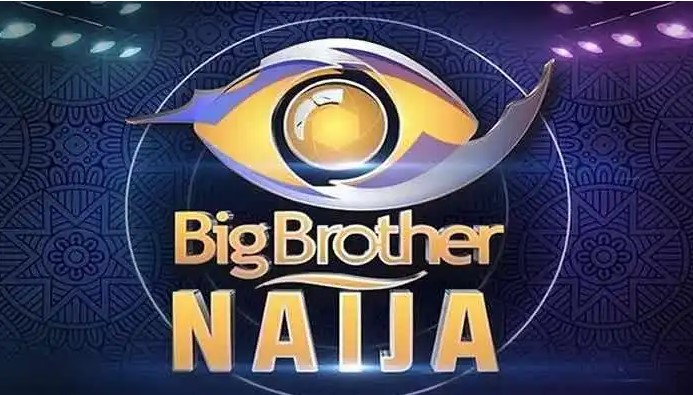

 News7 hours ago
News7 hours ago
 News8 hours ago
News8 hours ago
 News7 hours ago
News7 hours ago
 Crime7 hours ago
Crime7 hours ago
 Business7 hours ago
Business7 hours ago
 News7 hours ago
News7 hours ago
 Lifestyle7 hours ago
Lifestyle7 hours ago
 News7 hours ago
News7 hours ago



